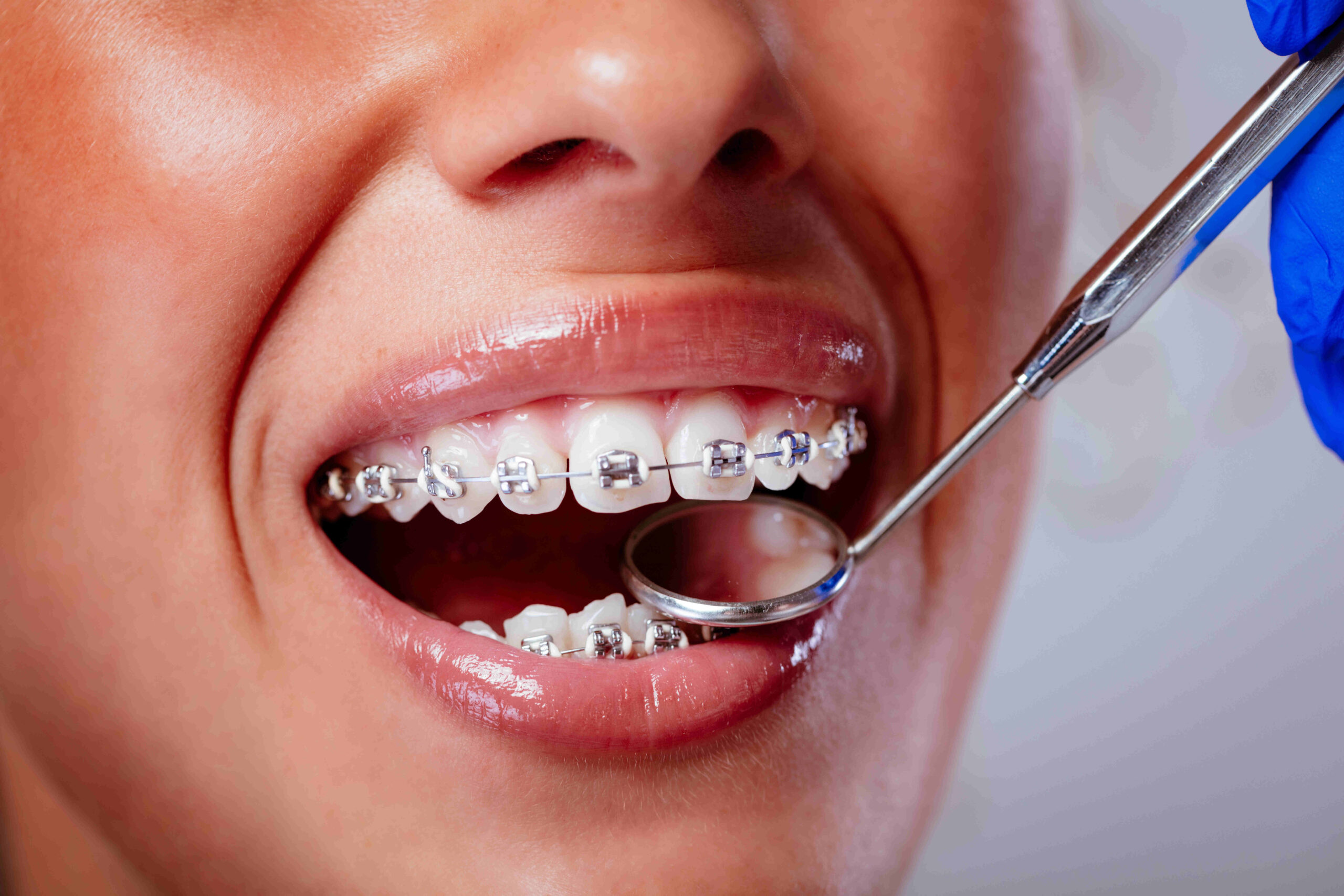Are you curious about the differences between lingual braces vs traditional braces and their respective pros and cons? Lingual braces are hidden behind the teeth, offering a discreet option, while traditional braces are more visible but often more affordable. Each type has its own set of advantages and drawbacks, making the choice dependent on individual preferences and needs.
Lingual Braces vs Traditional Braces: Aesthetic Differences
When considering lingual braces vs traditional braces, one of the most significant factors is their aesthetic impact. Lingual braces are designed to be placed on the back side of the teeth, making them virtually invisible from the front. This discreet positioning appeals to individuals who prefer a more subtle approach to orthodontic treatment. In contrast, traditional braces are affixed to the front of the teeth, making them more noticeable when you smile or speak. The visibility of traditional braces can be a concern for those who are conscious about their appearance during the treatment process.
The choice between lingual braces vs traditional braces often hinges on personal preference regarding visibility. While some people embrace the classic look of traditional braces, others may opt for the hidden nature of lingual braces to maintain a more natural appearance. Both options have their unique aesthetic considerations, which can influence a person’s decision based on their lifestyle and comfort level with visible orthodontic appliances. For those interested in exploring their options further, you can Find Traditional Braces Near Me: Local Orthodontists to discuss which type of braces might suit your needs best.
Comfort Levels
When considering lingual braces vs traditional braces, comfort is a significant factor for many individuals. Lingual braces are placed on the back of the teeth, which can initially cause discomfort as the tongue adjusts to their presence. This positioning may lead to temporary speech difficulties and irritation. On the other hand, traditional braces are affixed to the front of the teeth, which might be more familiar to those who have seen others with braces. However, they can also cause discomfort due to the brackets and wires rubbing against the inner cheeks and lips.
The comfort levels between lingual braces and traditional braces can vary greatly depending on personal preferences and individual oral structures. Some people may find that they adapt quickly to one type over the other, while others may experience prolonged discomfort. For those interested in exploring their options further, visiting a local orthodontist can provide more personalized insights. To learn more about traditional braces, you can visit our page on Gig Harbor Orthodontic Braces.
Speech Impact
When considering lingual braces vs traditional braces, one important factor to evaluate is their impact on speech. Lingual braces, which are placed on the inner side of the teeth, may initially cause more noticeable speech difficulties compared to traditional braces. This is because the tongue comes into contact with the brackets and wires, potentially affecting pronunciation and clarity. On the other hand, traditional braces, positioned on the front of the teeth, might have a less pronounced effect on speech since they do not interfere as directly with tongue movement. However, both types of braces typically require an adjustment period during which any speech impediments tend to diminish as individuals become accustomed to their presence.
Cost Comparison
When considering lingual braces vs traditional braces, the cost is a significant factor for many individuals. Lingual braces, which are placed on the back of the teeth, tend to be more expensive due to their custom design and the specialized skills required for installation. On the other hand, traditional braces, which are affixed to the front of the teeth, are generally more affordable and widely available. The price difference can be attributed to the complexity and time involved in fitting lingual braces compared to the more straightforward process of traditional braces. For those exploring orthodontic options in the area, Gig Harbor Orthodontics offers insights into various treatments; learn more by visiting Gig Harbor Dentist.
Treatment Duration
When considering lingual braces vs traditional braces, treatment duration is a key factor that often influences decision-making. Generally, the time required to achieve desired results can vary based on individual dental needs and the complexity of the case. Lingual braces, which are placed on the back of the teeth, may sometimes require a longer treatment period compared to traditional braces due to their unique positioning and the intricate adjustments needed.
On the other hand, traditional braces, which are affixed to the front of the teeth, have been used for decades and typically offer a more predictable timeline for treatment. However, it’s important to note that the actual duration for either option will depend on various factors, including the specific orthodontic issues being addressed and the patient’s adherence to treatment protocols.
Maintenance Requirements
When considering lingual braces vs traditional braces, understanding the maintenance requirements for each option is crucial. Lingual braces, which are placed on the back of the teeth, can be more challenging to clean due to their positioning. This may require more meticulous oral hygiene practices to prevent plaque buildup and ensure effective cleaning. On the other hand, traditional braces, with brackets and wires on the front of the teeth, are more visible and may be easier to clean with standard brushing and flossing techniques. Both types of braces necessitate regular dental check-ups to monitor progress and make necessary adjustments, ensuring that the teeth are moving as planned.
Eating Restrictions
When considering lingual braces vs traditional braces, it’s important to understand the eating restrictions associated with each option. Both types of braces require some dietary adjustments to prevent damage and ensure effective treatment. With traditional braces, foods that are hard, sticky, or chewy can pose a risk to the brackets and wires, potentially leading to breakage or misalignment. Lingual braces, which are placed on the back of the teeth, also necessitate caution with similar types of foods, as they can be equally susceptible to damage. Regardless of the choice between lingual braces vs traditional braces, maintaining a mindful approach to eating can help in achieving the desired orthodontic results.
Visibility Concerns
When considering lingual braces vs traditional braces, one of the primary factors that often comes into play is visibility. Traditional braces are typically more noticeable as they are affixed to the front of the teeth, making them visible when you smile or speak. In contrast, lingual braces are placed on the back of the teeth, offering a more discreet option for those concerned about the appearance of metal brackets. This difference in placement can significantly impact a person’s comfort level with their orthodontic treatment, especially in social or professional settings where discretion might be preferred.
Suitability for Complex Cases
When considering lingual braces vs traditional braces, it’s important to understand their suitability for complex orthodontic cases. Lingual braces, which are placed on the inside of the teeth, can be effective for certain intricate dental issues, but their application may be limited by the specific nature of the misalignment. Traditional braces, on the other hand, are often preferred for more severe or complex cases due to their versatility and ability to exert greater control over tooth movement. The choice between lingual braces vs traditional braces ultimately depends on the unique requirements of the individual’s dental structure and the complexity of the case at hand.
Conclusion
In the debate of lingual braces vs traditional braces, understanding the pros and cons of each can help you make an informed decision; for more information, call 253-851-9473 or check out the reviews on Google Maps.

